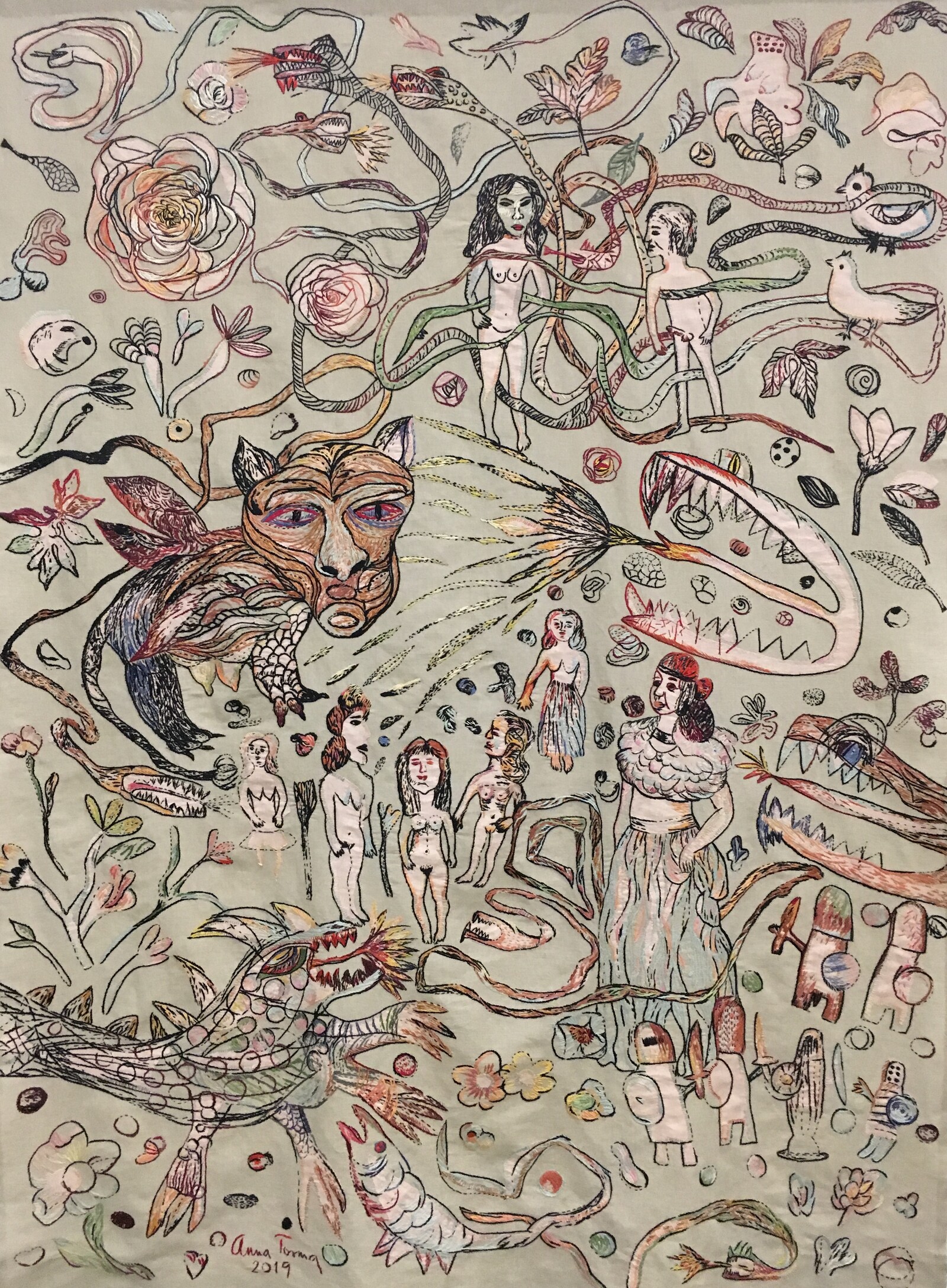January 11–April 1, 2020
61 York Street
Sackville New Brunswick E4L 1E1
Canada
Hours: Friday–Monday 10am–5pm,
Saturday–Sunday 1–5pm
T +1 506 364 2574
owens@mta.ca
Amalie Atkins, Aganetha Dyck, Meryl McMaster, Sylvia Ptak, Vicky Sabourin, Diana Thorneycroft, Anna Torma, Laura Vickerson, Janice Wright Cheney
Curator: Anne Koval
This group exhibition explores the wondrous in nature by reconsidering the role of animals in storytelling. These works present fantastical narratives in which animals preside over strange episodes: tales are rewritten or unwritten, travellers embark on uncertain journeys, danger lurks deep in the forest, a witch appears from nowhere, birds and beasts are spellbound, clothing is enchanted, and a shoe materializes, as if magically spun from gold. If animals are “good to think with,” as anthropologist Claude Lévi-Strauss once famously remarked, then folk and fairy tales have a long history of speaking through beasts, whose otherworldly transformations can express our innate or unconscious longings and desires.
We would like to acknowledge, honour, and pay respect to the traditional owners and custodians (from all four directions) of the land on which we gather. It is upon the unceded, ancestral lands of the Mi’kmaq and Wolastoqiyik Nations that Mount Allison University is built. While this area is known as Sackville, New Brunswick, it is part of Sigenigteoag, a district of the greater territory of Mi’kma’ki. This territory is covered by the “Treaties of Peace and Friendship,” which the Mi’kmaq and Wolastoqiyik first signed with the British Crown in 1725.
The Owens Art Gallery acknowledges the generous support of all its funders, including Mount Allison University, the Canada Council for the Arts, the New Brunswick Minister of Tourism, Heritage and Culture, the Town of Sackville, and the Friends of the Owens.
About the Owens Art Gallery
The Owens Art Gallery first opened its doors in 1895. It is Canada’s first university art gallery and the custodian of an important collection of over 4,000 works spanning the nineteenth, twentieth, and twenty-first centuries. The Owens occupies its original building, which was designed in the Beaux-Arts style by Edmund Burke, one of Canada’s most influential architects. In addition to presenting a dynamic program of contemporary and historical exhibitions, targeted community outreach and education initiatives, and innovative online and social media projects, the Owens is responsible for Colville House, a small house museum located in the historic home of one of Canada’s best-known visual artists: Alex Colville.

